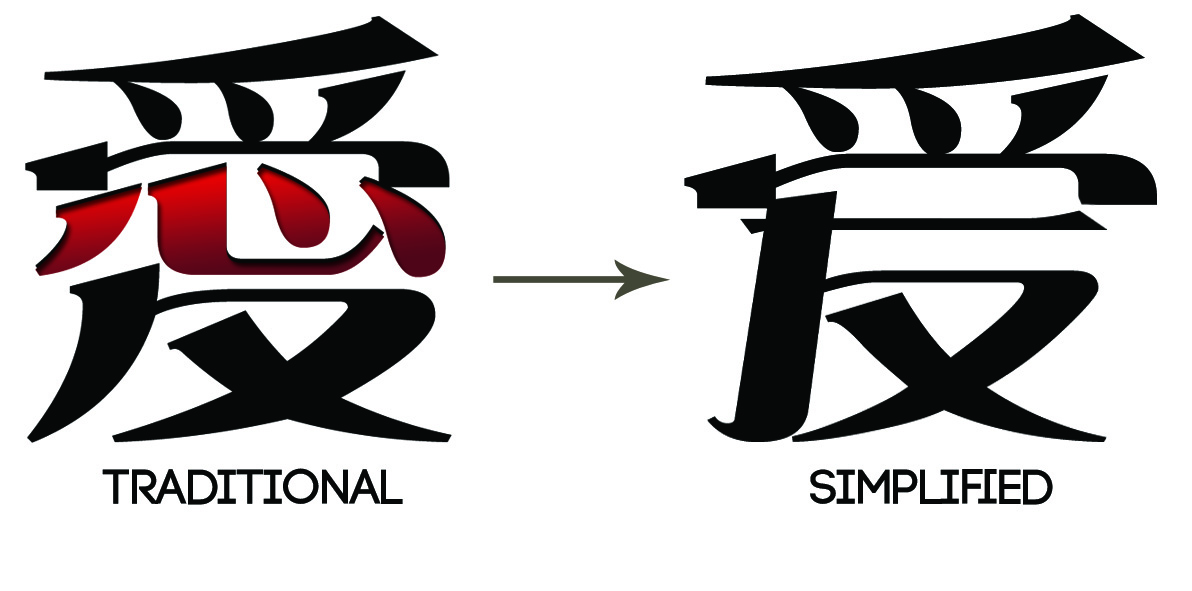 Let’s start where things are – relatively speaking – simplest. There are only two scripts used to write the Chinese language. These are : · Simplified Chinese – was widely promoted in the early 1950s as part of a system of Communist reforms in mainland China designed to improve literacy amongst the country’s huge population. · Traditional Chinese – the pre-reform system of Chinese writing. The Simplified Chinese writing system mandated the following differences to Traditional Chinese: 1. Reduced strokes – the number of “strokes” (i.e. lines) required to write a character was reduced. 2. Reduced number of characters – the overall number of characters was lowered. 3. Character selection – where several characters could previously be used to represent the same idea, one – usually the most popular – was now chosen as being the “correct” one. But the work to simplify the language in the 1950s was really just one stage in a longer process. It really began in the late 19th century – and it’s still an ongoing one. Regular updates to the list of standardised characters are still happening. The last one, at time of writing, was in 2013. That is not to say there is only one version of Simplified Chinese and one version of Traditional Chinese though. There are in fact four major written Chinese language versions. The use of each one tends to correspond to a different region… Where is Simplified Chinese used ?Simplified Mandarin in Mainland China, Malaysia and overseasThis is the written Chinese language variant most often referred to as “Simplified Chinese”. It’s the official script of mainland China. Thus the vocabulary and phrasing of the official spoken dialect of China – Mandarin – is apparent within it.Simplified Mandarin in SingaporeAlso usually referred to as “Simplified Chinese”, though generally with a clear “Singapore” note attached, the written variant of Chinese used in Singapore has a lot in common with that used in mainland China. However, it has evolved its own vocabulary and style not used on the mainland.This means that while a translation targeting mainland China might be understood in Singapore, it will clearly not be designed with a native eye in mind. Where is Traditional Chinese used?Traditional Mandarin in TaiwanThe reforms instituted in mainland China in the 1950s did not affect Taiwan. Thus, Traditional Chinese remains the written script. A native Taiwanese reader will be accustomed to different phrasing and vocabulary from a reader on the mainland too – even though the official spoken dialect of Taiwan is also Mandarin.Traditional Cantonese in Hong Kong, Macao and overseasHong Kong’s long period of British rule means it uses Cantonese as its official spoken and written dialect.Readers used to the Traditional Mandarin Chinese used in Taiwan will likely be able to understand the Traditional Cantonese used in Hong Kong, however phrasing and vocabulary can be quite different. They will also come across some characters which are completely unknown at home. That’s because quite a few characters in Traditional Cantonese do not exist in Traditional Mandarin at all. The evolution of Traditional and Simplified Chinese Languages are not static objects. Simplified and Traditional Chinese continue to evolve naturally. There are now many new ideas and words in mainland China’s Simplified Chinese which do not occur in Hong Kong Traditional Chinese, for example. Similarly, the ways in which the Chinese variants are used diverge as different countries or regions develop in asymmetrical ways, experiencing different events as well as different political or societal changes. In fact, this phenomenon is largely the reason why China has so many languages in the first place… |